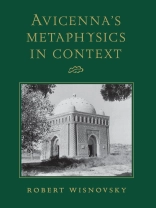The eleventh-century philosopher and physician Abu Ali ibn Sina (d. A.D. 1037) was known in the West by his Latinized name Avicenna. An analysis of the sources and evolution of Avicenna’s metaphysics, this book focuses on the answers he and his predecessors gave to two fundamental pairs of questions: what is the soul and how does it cause the body; and what is God and how does He cause the world? To respond to these challenges, Avicenna invented new concepts and distinctions and reinterpreted old ones. The author concludes that Avicenna’s innovations are a turning point in the history of metaphysics. Avicenna’s metaphysics is the culmination of a period of synthesis during which philosophers fused together a Neoplatonic project (reconciling Plato with Aristotle) with a Peripatetic project (reconciling Aristotle with himself). Avicenna also stands at the beginning of a period during which philosophers sought to integrate the Arabic version of the earlier synthesis with Islamic doctrinal theology (kalam). Avicenna’s metaphysics significantly influenced European scholastic thought, but it had an even more profound impact on Islamic intellectual history—the philosophical problems and opportunities associated with the Avicennian synthesis continued to be debated up to the end of the nineteenth century.
Om författaren
Robert Wisnovsky is Associate Professor and Director of the Institute of Islamic Studies at Mc Gill University.












